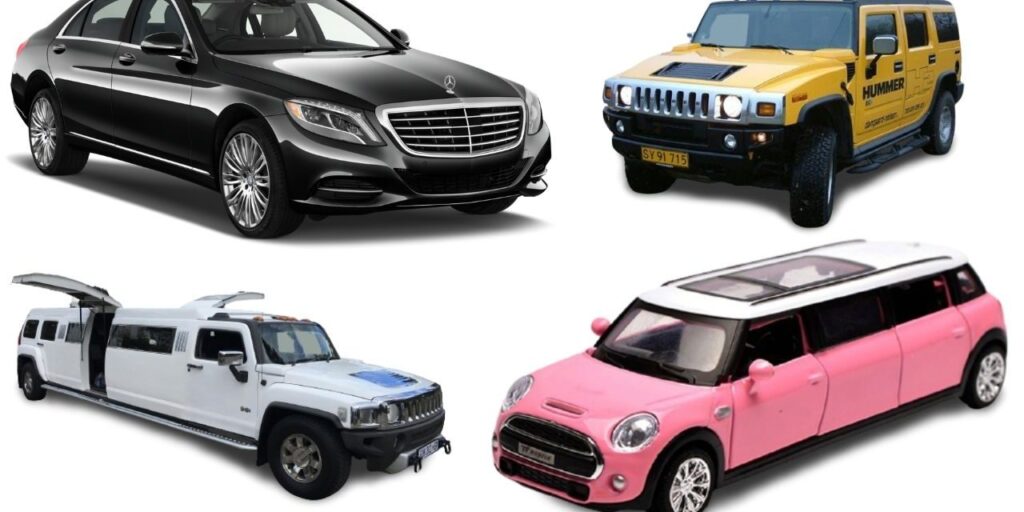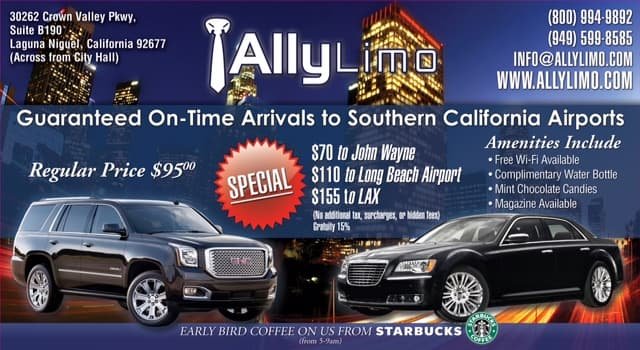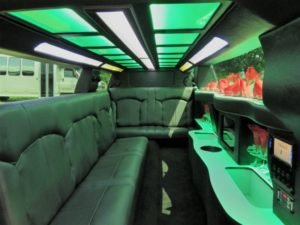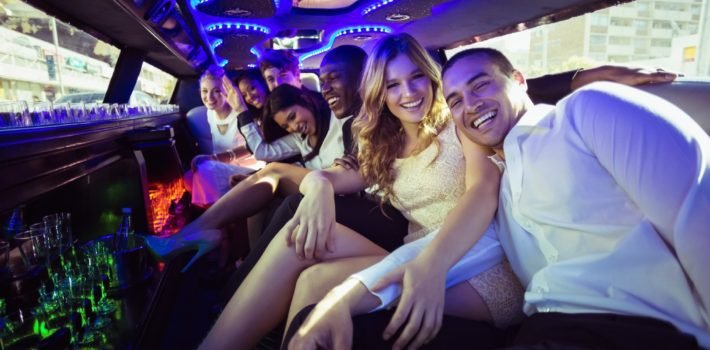Did you know that the exact difference between a car and a limousine lies not only in their size but also in the luxurious features they offer? While cars are commonly used for personal transportation, limousines are associated with elegance and prestige. From their spacious interiors to their stylish designs, limousines have become a symbol of luxury and sophistication.
Throughout history, limousines have been favored by the wealthy and powerful, dating back to the early 1900s when they were first introduced. In addition to their larger size, limousines often come equipped with amenities such as minibars, entertainment systems, and plush seating. It is no wonder that these vehicles are popular for special occasions like weddings and red carpet events, where they provide a touch of glamour and opulence. With their distinctive style and attention to detail, limousines continue to elevate the concept of modern transportation.
Wondering what sets a car apart from a limousine? Let’s explore the exact differences! While both are vehicles, limousines are typically longer and more luxurious than cars. Limousines often have extra amenities like a privacy partition, mini bar, and entertainment system, making them ideal for special events. Cars, on the other hand, are more practical for everyday use. So, whether you’re looking for elegance or convenience, understanding these distinctions can help you make an informed choice.

What is the Exact Difference Between a Car and a Limousine?
When it comes to transportation, two popular options that often come to mind are cars and limousines. While both are vehicles designed to transport people from one place to another, there are distinct differences between the two. In this article, we will delve into the exact dissimilarities between a car and a limousine, exploring their features, uses, and overall experience. So, let’s explore the world of automotive transportation and discover what sets these two vehicles apart.
1. Size and Exterior
Cars and limousines differ significantly when it comes to their size and exterior appearance. A car is a compact vehicle designed to accommodate a smaller number of passengers, typically up to five individuals. It usually has two or four doors, a roof, and comes in various shapes and sizes, including sedans, hatchbacks, SUVs, and sports cars. On the other hand, a limousine stands out with its elongated body and luxurious appeal. Limousines are lengthened versions of regular cars, with additional space added to the passenger area. They often have a stretched and sleek design, giving them a distinct and glamorous look that is associated with luxury travel.
Moreover, limousines tend to be more eye-catching and are often used for special occasions, such as weddings, proms, or corporate events. They often feature luxurious amenities like tinted windows, a well-designed exterior with elegant detailing, and sometimes even a chauffeur.
2. Interior Space and Passenger Capacity
One of the primary differences between cars and limousines lies in their interior space and passenger capacity. Cars are designed to be practical and efficient, offering enough room for a small group of passengers and their luggage. Typically, cars have two rows of seating, with the backseat accommodating two to three passengers comfortably. The limited interior space in cars makes them ideal for everyday commuting, errands, or small family trips.
Limousines, on the other hand, are known for their spacious interiors. Due to their extended body length, they offer significantly more legroom and overall space for passengers. The back area of a limousine may have a facing seat configuration or even a lounge-like arrangement with additional amenities like a mini-bar, entertainment systems, and partitions for privacy. Some limousines can easily accommodate up to ten or more passengers, making them a preferred choice for larger groups or lavish events where comfort and style are paramount.
3. Comfort and Amenities
When it comes to comfort and amenities, limousines surpass regular cars by providing a superior level of luxury and convenience. While cars may offer certain amenities like air conditioning, power windows, and a decent audio system, the focus is primarily on practicality and affordability. In contrast, limousines are synonymous with opulence, offering a wide range of amenities and features to enhance the passenger experience.
Some common amenities found in limousines include plush and lavish seating, state-of-the-art sound systems, mood lighting, mini-bars, televisions, and even privacy partitions, allowing passengers to separate themselves from the driver. Limousines are often equipped with advanced technology and entertainment options, making the journey not only comfortable but also enjoyable, especially for those traveling long distances or attending special events.
4. Cost and Accessibility
While cars are readily accessible to a wide range of individuals and provide an affordable means of transportation, limousines are usually reserved for special occasions or those seeking a luxurious experience. Owning a car is a common necessity for many individuals and families, as it provides practicality and independence in daily life. Cars are available in various price ranges, allowing individuals to choose a vehicle that matches their budget and requirements.
Limousines, on the other hand, are often associated with higher costs, both in terms of ownership and rental. The extended length, luxurious features, and exclusive nature of limousines contribute to their higher price point. They are often rented for specific events or occasions, adding a touch of sophistication and glamour. The cost of renting a limousine depends on factors such as the duration of rental, the type of limousine, and the amenities included. This exclusivity and higher cost make limousines a symbol of prestige and luxury.
5. Usage and Practicality
When it comes to usage and practicality, cars are relied upon for everyday transportation needs, such as commuting to work, running errands, or taking short trips. They provide a convenient and efficient mode of transportation for individuals and families. Cars are designed to be versatile, allowing easy maneuverability in urban areas while providing the necessary features for comfortable travel.
Limousines, on the other hand, are not meant for daily commuting but are instead utilized for special occasions, events, and celebrations. They offer a unique and luxurious experience that goes beyond everyday transportation. Limousines are often hired for weddings, prom nights, corporate events, or VIP transportation services. They provide a sense of grandeur and elegance, making any occasion feel extraordinary.
6. Perception and Image
The perception and image associated with cars and limousines are quite different. Cars are considered a common means of transportation, with various models and brands available to suit individual preferences and needs. While some cars may be associated with luxury and status, they typically cater to a wide range of users, from practical hatchbacks to high-performance sports cars.
On the other hand, limousines are often seen as a symbol of prestige and sophistication. They exude an aura of grandeur and exclusivity, making a statement wherever they go. The mere sight of a limousine often evokes images of special events, high-profile individuals, or memorable celebrations. The image of a limousine adds a touch of glamour and elegance to any occasion, leaving a lasting impression on both the passengers and onlookers.
A Statistical Insight
A research study conducted by a leading automobile industry analysis firm revealed that the global limousine rental market is projected to grow at a CAGR of 6.2% from 2021 to 2028. The rising demand for luxury travel experiences and the increasing disposable income of individuals are driving the growth of the limousine rental market. This statistic highlights the continued popularity and demand for the unique experience and prestige that limousines offer.
In conclusion, cars and limousines may fall under the categorization of vehicles, but they differ significantly in terms of size, passenger capacity, amenities, cost, practicality, and image. While cars offer practicality and versatility for everyday use, limousines stand out with their luxurious features, spacious interiors, and prestigious image. Understanding the exact differences between a car and a limousine allows individuals to make informed choices based on their needs, preferences, and the specific occasions they wish to celebrate or experience.
Key Takeaways: What is the Exact Difference Between a Car and a Limousine?
- A car is a general term for a motor vehicle used for transportation, while a limousine is a specific type of car that is larger and more luxurious.
- Limos are often used for special events or occasions such as weddings, proms, or corporate transportation.
- Limousines have a longer wheelbase and can accommodate more passengers compared to regular cars.
- Limos often come with amenities like mini bars, leather seating, and entertainment systems.
- Limousines are typically chauffeur-driven, providing an upscale and luxurious transportation experience.
Frequently Asked Questions
Are you curious about the difference between a car and a limousine? Well, you’ve come to the right place. In this Q&A section, we’ll dive into the exact distinctions between these two vehicles. Let’s get started!
1. What is the main difference between a car and a limousine?
The main difference between a car and a limousine is their size and capacity. Cars are typically smaller vehicles designed to comfortably seat a few passengers, while a limousine is a longer and more spacious vehicle that can accommodate a larger group of people.
Additionally, limousines often come equipped with luxurious amenities, such as a mini-bar, entertainment systems, and plush seating, making them ideal for special events and occasions.
2. How does the length of a car differ from that of a limousine?
When it comes to length, cars are generally much shorter compared to limousines. The average car typically ranges between 14 to 18 feet long, whereas a standard limousine can be anywhere from 20 to 30 feet long.
This increased length in limousines allows for more space, allowing passengers to stretch out and enjoy a comfortable ride while also providing room for added luxuries like a partition separating the driver from the passengers.
3. Can anyone drive a limousine or is special licensing required?
In most cases, driving a limousine requires a special license. Depending on the country or state you are in, you may need to obtain a chauffeur’s license or commercial driver’s license (CDL) to legally operate a limousine.
This is due to the larger size and different handling characteristics of a limousine compared to a regular car. Specialized training and testing are often required to ensure the safe operation of such a vehicle.
4. What types of events or occasions are better suited for a limousine?
Limousines are commonly used for special events and occasions where there is a need to transport a larger group of people in utmost comfort and style. Some examples of events and occasions where a limousine might be a great choice include weddings, proms, corporate events, and airport transfers.
The elegance and luxury associated with a limousine add a touch of sophistication to these occasions, making them memorable and enjoyable experiences for all passengers.
5. Are there any advantages to choosing a car over a limousine?
While both cars and limousines have their advantages, opting for a car might be more suitable in certain situations. Cars are more versatile and maneuverable, making them easier to navigate through traffic and park in tight spaces.
If you have a smaller group or don’t require the additional space and amenities of a limousine, a car can be a more economical and practical choice for everyday use or short trips.






